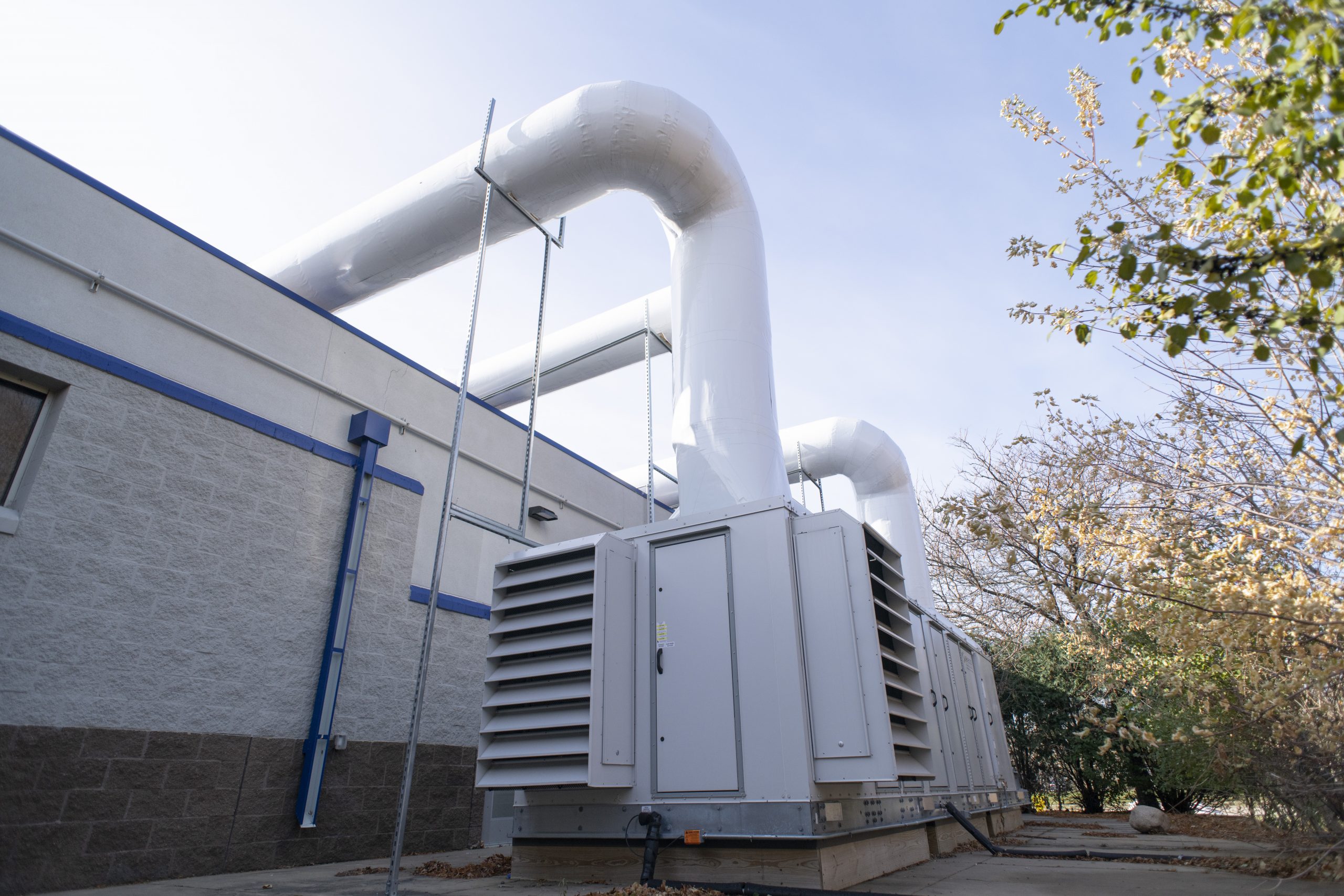Many of our FOSS families have asked about air circulation at our pools, so we wanted to give a quick overview of a major point of pride that we don’t often get to talk about: the top-of-the-line air exchange system we install at every school.
In 2021, the question is often framed in terms of the COVID-19 pandemic – as we all know, air circulation is one factor identified by the CDC as a way to help dilute airborne viruses to help reduce the risk of an infection. As the CDC states: “even a light wind can rapidly reduce concentrations. When indoors, ventilation mitigation strategies can help reduce viral particle concentration.”
But we were thinking about air circulation long before COVID came along. Creating a healthy, safe, enjoyable indoor pool requires powerful air handling systems. There are three main issues ours are designed to address:
- Removing air containing chloramines from the pool surface: Chloramines are formed when chlorine and contaminants combine as part of the cleaning process.
- Controlling humidity: Our warm pool water adds humidity to the air. We need to move humid air out of the pool area and replace it with conditioned air from outside.
- Removing odors: This is a comfort issue, and ties directly to chloramines, the source of “pool smell.”
Air exchange every 5-10 minutes
The good news: To achieve these goals, our air systems are designed to keep air exchanging at a very high rate (6-12 times per hour), keep air in constant motion, and exchange with outside air with no recirculation –air quality approaches that are among those recommended by the CDC for controlling COVID-19.
That’s not to say our systems were designed specifically to address viruses – they weren’t – but they go far beyond what you would find in almost any retail, entertainment, or office space you will encounter.
Watch this video from our co-founder Jon Foss about how air moves in a Foss Swim School:
One-way air motion with no recirculation by design
The next time you are at FOSS, look around to see how we keep air moving:
- INFLOW: Conditioned air from outside enters the pool area via several large vents near the ceiling at one end of the pool, directed down at an angle.
- ONE-WAY: The airflow traverses the pool surface from one end of the pool to the other, carrying with it chloramines and other airborne contaminants.
- OUTFLOW: The outflow vents are located on the wall opposite the inflow, sometimes under the benches, to suck air out and vent it outside.
We have always been extremely proud of the air handling at our schools and are glad that it offers so many benefits to our swimmers, staff and families. While the risk of COVID-19 transmission is never zero, we feel good about how our airflow helps make FOSS safer than many other indoor public spaces our families visit every day.
